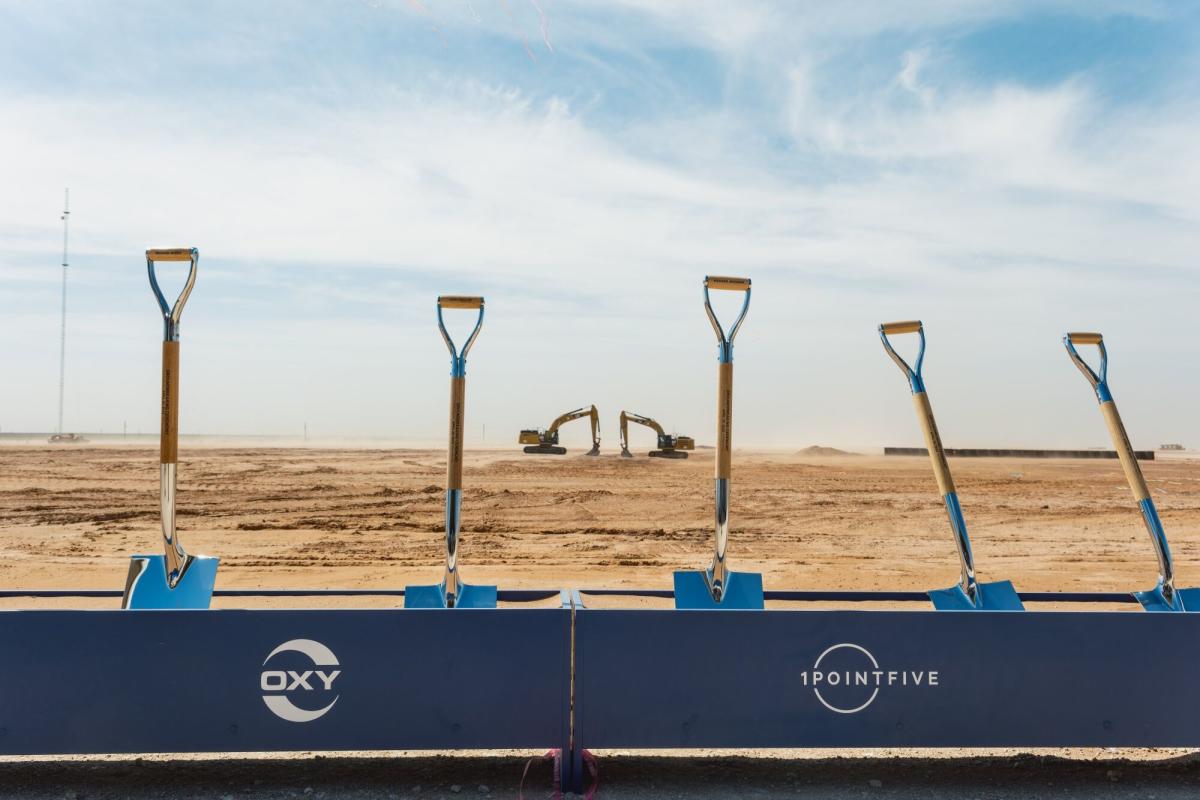Bussiness
Occidental Clinches Record Carbon-Removal Deal With Mega-Buyer Microsoft

(Bloomberg) — Oil giant Occidental Petroleum Corp. clinched a record carbon removal deal with Microsoft Corp. amid the software titan’s push to reduce its expanding emissions.
Most Read from Bloomberg
Occidental, which is building an carbon-capture portfolio through its subsidiary 1PointFive, plans to build a fleet of plants that suck carbon dioxide directly from the air. Microsoft on Tuesday agreed to buy 500,000 metric tons of credits from the company’s Stratos plant in Texas, which is expected to start up next year.
The deal marks the single largest purchase of credits generated by so-called direct air capture, or DAC — bolstering Occidental’s position in the race to scale and monetize carbon capture technology. For Microsoft, whose push into artificial intelligence has triggered a spike in emissions, such agreements are central to addressing a growing carbon footprint.
Yet DAC, which uses giant fans to suck carbon dioxide out of the atmosphere, is expensive, energy-intensive and not yet proven at industrial scale. The world’s largest DAC plant, operated by Climeworks AG, is designed to corral 36,000 tons of CO2 annually, far from the billions of tons required to stave off the worst effects of global warming. But if DAC works as promised, it will not only help to limit global warming but could also help improve the quality of the voluntary carbon market.
READ: How an Oil Giant Took Control of Biden’s Billion-Dollar Bet on Carbon Capture
Microsoft was an early supporter of the burgeoning carbon removal industry, signing major deals with Stockholm Exergi and Orsted A/S to buy CO2 credits generated at power plants. It also inked a deal last year with Heirloom Carbon Technologies Inc. for 315,000 tons of carbon removal. Microsoft is by far the largest investor in carbon removal credits to date, having purchased more than 8 million tons across its portfolio, according to the industry tracker cdr.fyi.
While Microsoft aims to be carbon negative by 2030, its emissions last year were about 30% higher than in 2020 in part due to energy-intensive AI data centers. Microsoft President Brad Smith recently said that if Microsoft is shooting for the moon on decarbonization, the moon is “more than five times as far away as it was in 2020.
President Joe Biden’s administration has invested big in DAC, promising to spend $3.5 billion on regional hubs aimed at removing, capturing and storing 1.8 billion tons annually to achieve net-zero emissions by mid-century.
1PointFive and Climeworks were two of the companies selected to be part of the Energy Department’s $1.2 billion DAC hubs project on the Gulf Coast. Yet the companies have very different missions. Occidental is motivated in part by the promise of using captured carbon to dredge up more oil.
READ: A Startup Battles Big Oil for the $1 Trillion Future of Carbon Cleanup
Occidental Chief Executive Officer Vicki Hollub has called DAC a way to produce “net-zero oil,” and said some of the CO2 captured from its facilities will be used for enhanced oil recovery, which involves injecting CO2 into oil wells to extract more oil. That, critics say, is at odds with DAC’s ultimate promise to limit the worst effects of global warming.
The CO2 underlying the carbon credits in Microsoft’s agreement with 1PointFive will not be used to produce oil and gas, according to a statement.
The $1 billion Stratos plant, which is expected to start operations in mid-2025, also has sold credits to Amazon.com Inc., Shopify Inc. and Airbus SE. Occidental hopes to build 99 more like it over the next 10 years. In a February investor presentation, the company projected that it will be able to capture carbon at scale for $125 to $200 per ton, an estimate that some DAC experts view as “a fantasy” given the energy-intensity of the process.
But if Occidental succeeds, the $54 billion company could be worth $150 billion by 2050, according to BloombergNEF.
Occidental’s last foray into carbon capture wasn’t a raging success, however. In 2010, the company built a giant plant about 100 miles away from Stratos to capture carbon from a natural gas processing plant, a process known as point-source carbon capture. That plant has consistently failed to deliver results, according to a Bloomberg Green investigation, and the project was sold off in 2022 for a fraction of the build cost.
READ: An Oil Giant Quietly Ditched the World’s Biggest Carbon Capture Plant
Occidental’s DAC projects have also faced opposition from local communities concerned about the pipelines required to transport captured CO2 to storage sites and skeptical about the community benefits. The US could require as many as 96,000 miles of new pipelines to handle the CO2 captured from power plants or DAC facilities, or enough to circle the Earth four times, according to an Energy Department estimate.
(Updates with details in the fifth paragraph. A previous version of this story corrected Microsoft’s carbon negative goal and the name of Climeworks AG.)
Most Read from Bloomberg Businessweek
©2024 Bloomberg L.P.







:max_bytes(150000):strip_icc()/roundup-writereditor-loved-deals-tout-f5de51f85de145b2b1eb99cdb7b6cb84.jpg)


